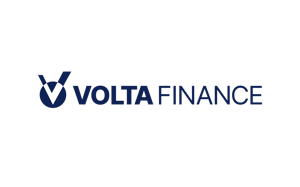The hum of markets shifts beneath the surface of every chart and headline, hinting at possibilities that lie beyond simple gains. Investors know that beneath every promising uptick there is an undercurrent of uncertainty, and the most compelling opportunities often arise where the slightest misstep can unravel plans. Bearing that tension in mind, it pays to pause and consider how each decision might tilt the balance between ambition and prudence.
Navigating risk need not be an act of bravado. At its core, risk embodies the chance that an asset may not convert to expected value when you need it most. Liquidity risk can leave you stranded, unable to sell holdings swiftly without undermining their worth. Inflation risk seeps in quietly, eroding purchasing power even as nominal balances inch upward. Market risk, driven by shifting sentiment and economic shifts, can punish or reward in equal measure, while credit risk reminds us that issuing entities may fail to honour obligations. Recognising these dimensions is not an academic exercise but a vital step in aligning strategy with temperament.
Yet the prospect of loss is inseparable from the lure of reward. Returns may arrive as interest from fixed-income securities or as dividends rewarding patient shareholders. Capital gains crystallise when timing and foresight converge, while income streams such as rental yields or bond coupons can underpin portfolios with steady cash flow. Weighing these outcomes against the risks involved is less about choosing safety or seeking outsized returns than about matching opportunity to intent. A shorter time horizon, for instance, may call for assets with higher liquidity even at the expense of potential yield, whereas a decades-long plan can accommodate less liquid holdings in pursuit of superior long-term value.
Decisions anchored in introspection generally outperform those driven by noise. An investor’s individual risk tolerance, shaped by experience, objectives and financial commitments, must guide allocations rather than the latest market narrative. What that tolerance looks like in practice varies: some find comfort in diversification across asset classes and geographies, diluting the impact of any single downturn. Others favour concentrated positions in businesses they understand deeply, accepting greater volatility for the chance at distinguished returns. Either route demands clear-eyed self-assessment and the discipline to adjust when circumstances change.
Crucially, diversification extends beyond simply holding a broad list of securities. True diversification involves combining assets whose performance trajectories do not correlate perfectly, thereby smoothing overall volatility and mitigating isolated disruptions. Balancing equities with fixed income, incorporating alternative exposures such as real estate or commodities, and evaluating currency dynamics can all contribute to a more robust portfolio. Yet over-diversification introduces its own perils, obscuring sources of risk and diluting potential upside, so each additional layer warrants scrutiny.
Opportunities also arise from asking the right questions. Products promising guaranteed outcomes can mask embedded assumptions or hidden fees that erode actual returns. Scrutinising offering documents, stress-testing scenarios under varied economic conditions, and seeking clarity on liquidity provisions empower investors to avoid unwelcome surprises. Engaging a qualified advisor can enhance this process, providing customised insights that reflect personal milestones—whether funding a child’s education, planning for retirement or transitioning wealth to the next generation.
The interplay of strategy and adaptability ultimately defines investment success. Markets seldom follow scripted paths; they pivot on policy shifts, technological breakthroughs and shifts in consumer behaviour. Portfolios structured to capture core themes, such as demographic changes or innovation cycles, can capitalise on enduring trends, while tactical adjustments guard against shorter-term turbulence. Regular portfolio reviews, conducted without bias or emotional attachment, enable investors to rebalance exposures in alignment with evolving objectives and market conditions.
In the final analysis, embracing risk as an inherent companion to reward encourages a more thoughtful approach to capital deployment. While no roadmap can chart every twist and turn, a framework grounded in self-awareness, disciplined diversification and persistent inquiry offers a clearer path forward. When caution and opportunity converge, investors are poised not merely to weather storms but to capitalise on them.
NEBA Private Clients delivers personalised wealth management and advisory services tailored to each client’s unique circumstances. By integrating comprehensive planning with targeted investment strategies across global markets, NEBA helps individuals and families pursue long-term objectives while remaining attuned to shifting economic and regulatory landscapes.
TEAM plc (LON:TEAM) is building a new wealth, asset management and complementary financial services group. With a focus on the UK, Crown Dependencies and International Finance Centres, the strategy is to build local businesses of scale around TEAM’s core skill of providing investment management services.






































